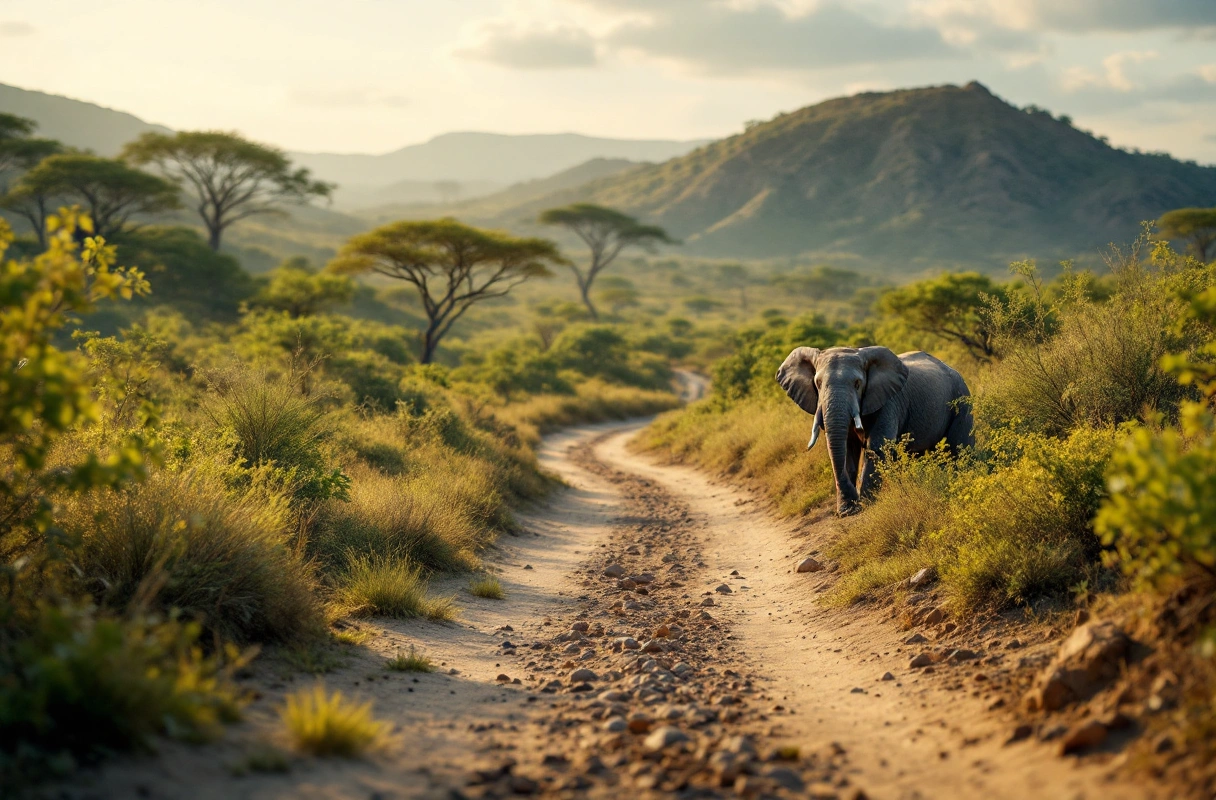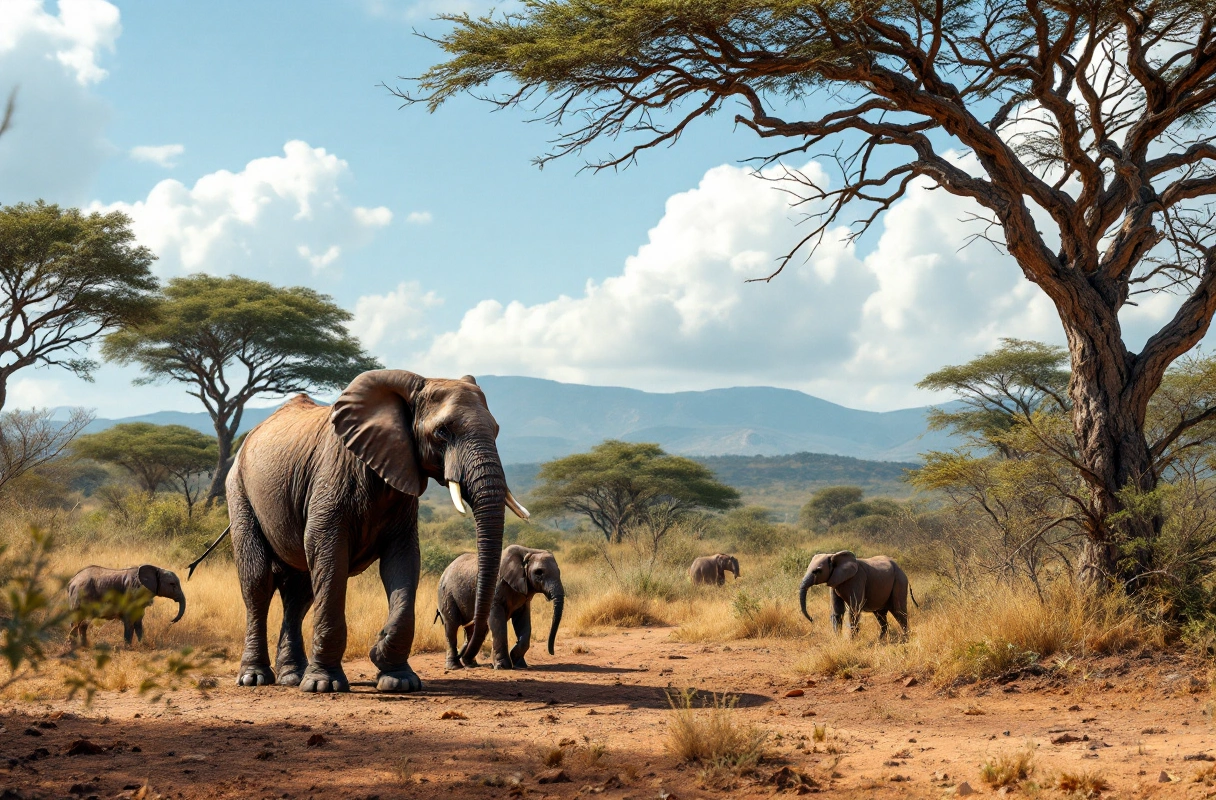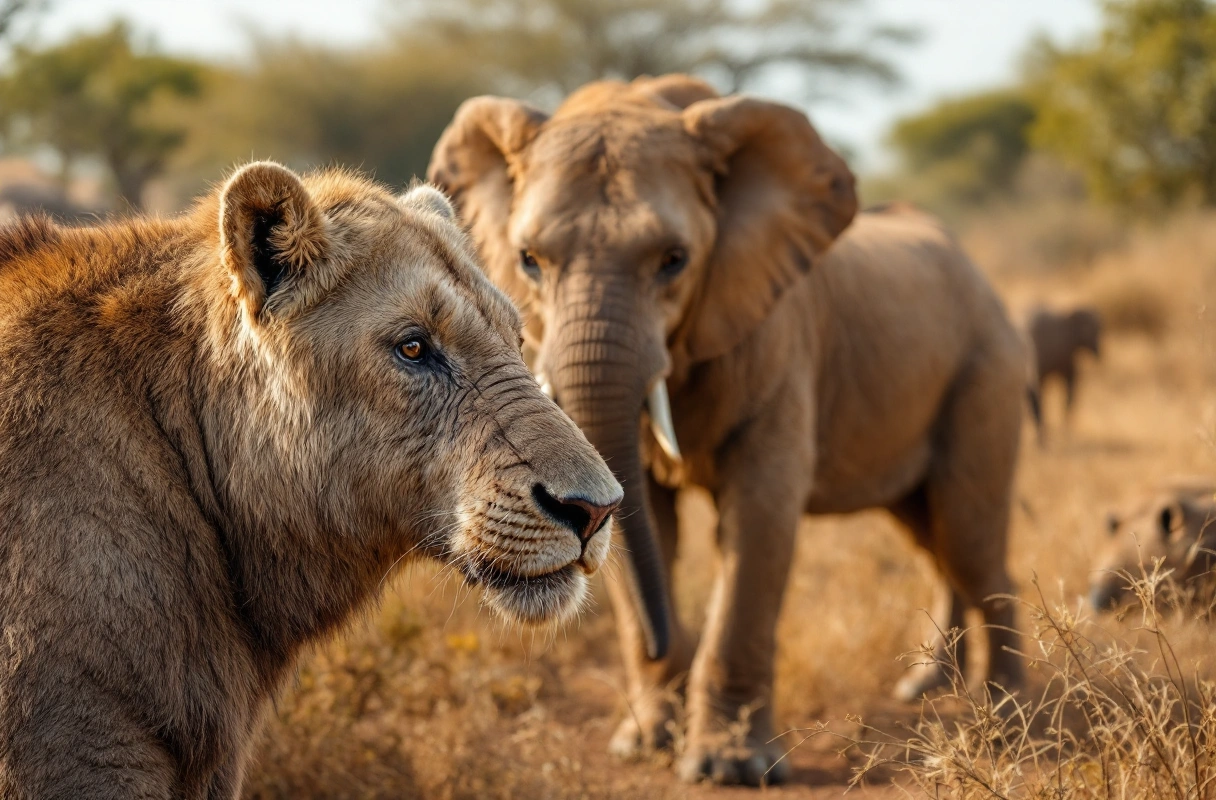
Africa is a continent bursting with life, from the sprawling savannas to the dense rainforests, each ecosystem teeming with unique wildlife. However, many African animals are facing unprecedented threats due to habitat loss, poaching, and climate change. Understanding these challenges and the ongoing endangered African animals is critical not only for protecting these species but also for preserving the rich biodiversity of our planet. This guide will delve into the various endangered African animals, conservation initiatives, and the best times of year to see wildlife to witness these magnificent creatures in their natural habitat.

African animals play a crucial role in maintaining the balance of their ecosystems. The interactions between species, such as predator-prey relationships and symbiotic partnerships, contribute to the overall health of the environment. For instance, elephants are known as ecosystem engineers; their feeding habits shape the landscape by uprooting trees and creating water holes that benefit other species. Understanding this interconnectedness is vital for effective conservation strategies.
Additionally, African animals are integral to the cultural and economic fabric of the continent. Wildlife tourism significantly contributes to the economies of several African nations. By protecting these animals, we not only preserve biodiversity but also support local communities that depend on wildlife for their livelihoods.

The International Union for Conservation of Nature (IUCN) has classified numerous African species as endangered or critically endangered. Below are some notable examples:
African elephants, the largest land mammals, are currently facing severe threats from poaching for their ivory tusks and habitat loss due to agricultural expansion. Conservation efforts are underway, with initiatives focusing on anti-poaching measures and community education.
Both the black and white rhino species are teetering on the brink of extinction due to poaching and illegal trade in rhino horns. Conservation programs have been implemented to protect these majestic animals, including intensive monitoring and protection strategies in national parks.
Found in the Virunga Mountains of Central Africa, mountain gorillas have seen a slight population increase due to rigorous conservation efforts, including anti-poaching patrols and ecotourism initiatives. However, they remain critically endangered, largely due to habitat destruction and disease.
These unique canines are one of the most endangered carnivores in Africa, primarily due to habitat fragmentation and human-wildlife conflict. Conservation efforts focus on habitat restoration and educating local communities about the ecological importance of these animals.
Cheetahs are facing dramatic declines in their populations, primarily due to habitat loss and human-wildlife conflict. Conservation strategies include creating wildlife corridors to connect fragmented habitats and reducing human encroachment on their territories.

Conservation efforts for African animals are multifaceted and involve various stakeholders, including governments, NGOs, and local communities. Here are some key strategies being implemented:
Community involvement is crucial in conservation. Programs that engage local populations in wildlife protection often yield better outcomes. This approach not only helps in safeguarding endangered species but also empowers communities economically through ecotourism initiatives.
Many African countries have ramped up anti-poaching efforts by deploying rangers to protected areas, employing technology such as drones for surveillance, and increasing penalties for poachers. These initiatives have shown promise in reducing poaching rates for several species.
Restoring degraded habitats is essential for the survival of many endangered species. Conservation organizations are working on reforestation projects, wetland restoration, and the establishment of wildlife corridors to enhance connectivity between habitats.
Raising awareness about the plight of endangered African animals is vital. Educational programs in schools and communities help foster a sense of responsibility toward wildlife conservation and encourage participation in protective measures.
Witnessing African animals in their natural habitat is an unforgettable experience, and timing can significantly influence your wildlife viewing opportunities. Here are the best times of year to plan your wildlife experiences in Africa:
The dry season is arguably the best time to observe wildlife in Africa. As water sources dwindle, animals congregate around rivers and waterholes, making them easier to spot.
While wildlife viewing is more challenging during the wet season due to thick vegetation, it also offers unique opportunities. Many animals give birth during this time, providing a chance to see young animals.
Certain wildlife events can significantly enhance your experience. For example, the calving season for wildebeests occurs between January and March in the Serengeti, presenting a unique chance to witness the birth of young animals.
Despite the growing awareness of wildlife conservation, several misconceptions persist that can hinder efforts:
Many people believe that conservation only involves protecting animals. However, effective conservation includes habitat preservation, community engagement, and sustainable practices.
While many African animals are indeed endangered, not all species face the same level of threat. For instance, some populations of elephants and lions are stable in certain regions due to effective management and conservation strategies.
There is a perception that wildlife tourism negatively impacts animal welfare. However, when managed responsibly, wildlife tourism can provide critical funding for conservation efforts and create economic incentives for local communities to protect wildlife.
In recent years, technology has played an increasingly important role in wildlife conservation efforts. Here are some of the innovative methods being employed:
Drones are being used for aerial surveillance of protected areas, allowing conservationists to monitor wildlife populations and identify poaching activities in real time. This technology enhances the efficiency of anti-poaching efforts.
Researchers are using GPS collars to track the movements of endangered species. This data helps in understanding migration patterns and habitat usage, informing conservation strategies.
Camera traps are an invaluable tool for monitoring wildlife populations. These devices capture images of animals in their natural behaviors, providing critical data for research and conservation efforts.
For those looking to experience African animals firsthand, engaging responsibly is crucial. Here are some tips for responsible wildlife viewing:
Select tour operators that prioritize ethical wildlife experiences, ensuring that their practices do not harm the animals or their habitats. Look for operators that are certified by recognized conservation organizations.
Respect wildlife by observing them from a safe distance. Approaching animals too closely can cause stress and alter their natural behaviors.
Adhere to guidelines provided by tour operators and park authorities. These rules are designed to protect both wildlife and visitors, ensuring a safe and enjoyable experience.
The future of African animals hinges on continued conservation efforts and global support. As awareness grows, more individuals and organizations are joining the fight to protect these species and their habitats.
International cooperation is essential for successful conservation efforts. Countries must work together to combat poaching, share research, and develop best practices for wildlife management.
Supporting conservation organizations and advocacy groups can amplify efforts to protect African animals. Individuals can contribute through donations, volunteering, or even raising awareness in their communities.
The mission of organizations like Banana Slug Club aligns with the goals of wildlife conservation. By fostering curiosity and knowledge about nature, science, and wildlife, Banana Slug Club encourages a new generation of conservationists. Engaging with young audiences helps cultivate a sense of responsibility toward protecting endangered African animals.
Whether you're a nature enthusiast, student, or a child excited about learning, there are numerous resources available to deepen your understanding of wildlife and conservation efforts.
Explore our website for educational materials, interactive learning experiences, and opportunities to get involved in conservation initiatives. Together, we can make a difference in the lives of endangered African animals and ensure their survival for generations to come.
Visit us today at Banana Slug Club to learn more about how you can contribute to the protection of African wildlife and enhance your knowledge of the natural world.
Get free resources, early access to new features and updates.
No spam. Just fun educational emails!